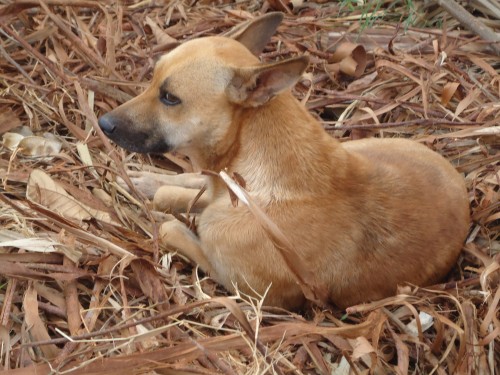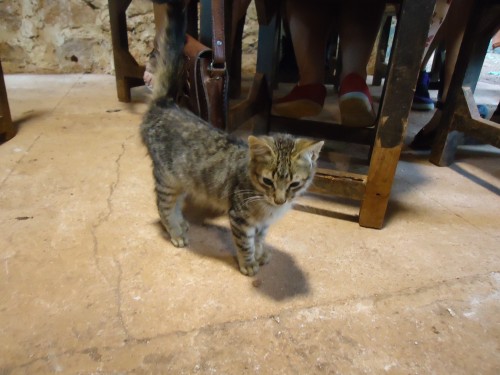The Tiny Cubans
May 1, 2012 by alcanney
During the long hours of waiting at the Miami airport, on our way to Cuba, I discovered something about myself: I hate waiting. I was making my more patient friends anxious with my own restlessness. One thing though that helped break the monotony was the appearance of a giant Rottweiler in line to be checked in to our flight. This dog must have been 200 lbs, and was getting a lot of attention from our fellow passengers. Some people were even taking pictures. I don’t know why this dog was being flown into Cuba, but I did catch myself thinking about it from time to time once we arrived. Once of the first things I noticed in Cuba was the size of the dogs. While the Rottweiler was probably two to three times the size of an average dog, the Cuban dogs were half to a third the size of an average dog. I admit that every time I saw a tiny Cuban dog, I estimated that the Rottweiler probably could have eaten a few of them and still been hungry.
Now, this might not have been interesting if this trend hadn’t continued for the rest of the trip. While we were in Havana, it wasn’t that noticeable; sure, the dogs and cats were small, but perhaps they were strays and just weren’t fed enough. However, as we entered the countryside, I couldn’t help but stare out the window at the smallest goats, cows, and horses that I’d ever seen. I thought they were all malnourished until Joel mentioned at one point that Cuba is home to some of the smallest animals in the world. I was fascinated by this – it couldn’t just be a result of malnutrition in the Special Period – and decided to do some research of my own.
Islands, in general, are very interesting places to study evolution, as the organisms there can sometimes evolve for thousands of years without disturbance from outside. Most people are familiar with the example of Darwin’s finches, showing that evolution can occur more quickly and noticeably on islands than on the mainland. One special phenomenon that can often happen on islands is called Foster’s rule, or the island rule, in which species quickly evolve to become larger or smaller. Some species become larger (gigantism) due to a lack of predation and an abundance of resources, while others become smaller (dwarfism) in order to conserve and maximize resources, depending on the conditions of the island. Dwarfism can be an effective method of survival, as smaller organisms more efficiently use nutrients and energy, need fewer resources, and can hide from prey. On an island, where resources may be limited, these factors are important. Gigantism, however, also has its benefits. Larger animals can prey on many types of smaller animals, can have large numbers of offspring, can dominate other animals, and can survive drought and famine better.
Pygmy hippos are an example of Foster's rule.
In Cuba, species have tended towards dwarfism. The hummingbird is the smallest bird in the world, and is endemic to Cuba. It can be only two inches long – so small that it is often mistaken for an insect. The third smallest frog in the world is also endemic to Cuba – the Monte Iberia Eleuth, less than half an inch long. Other tiny animals include the smallest scorpion, at half an inch long, and some of the smallest owls and bats.

The Monte Iberian Eleuth
Sources:
http://www.pbs.org/wgbh/nova/evolution/gigantism-and-dwarfism-islands.html
http://onlinelibrary.wiley.com/doi/10.1111/j.0014-3820.2006.tb00516.x/abstract
Leave a Reply
You must be logged in to post a comment.


